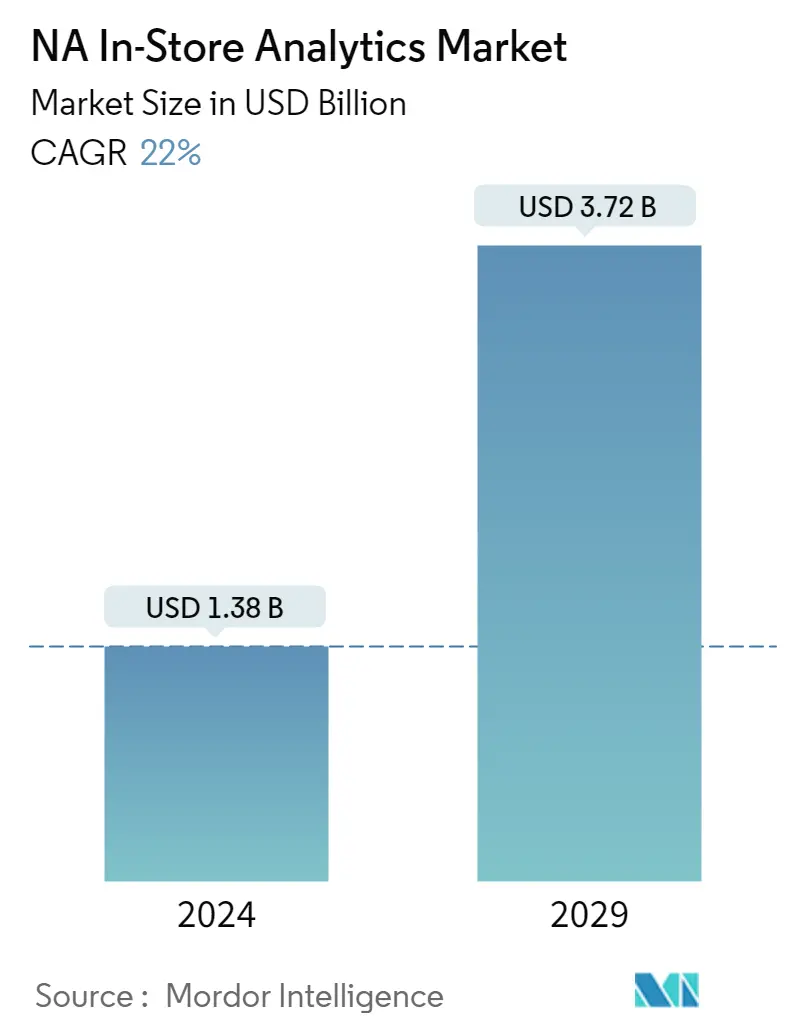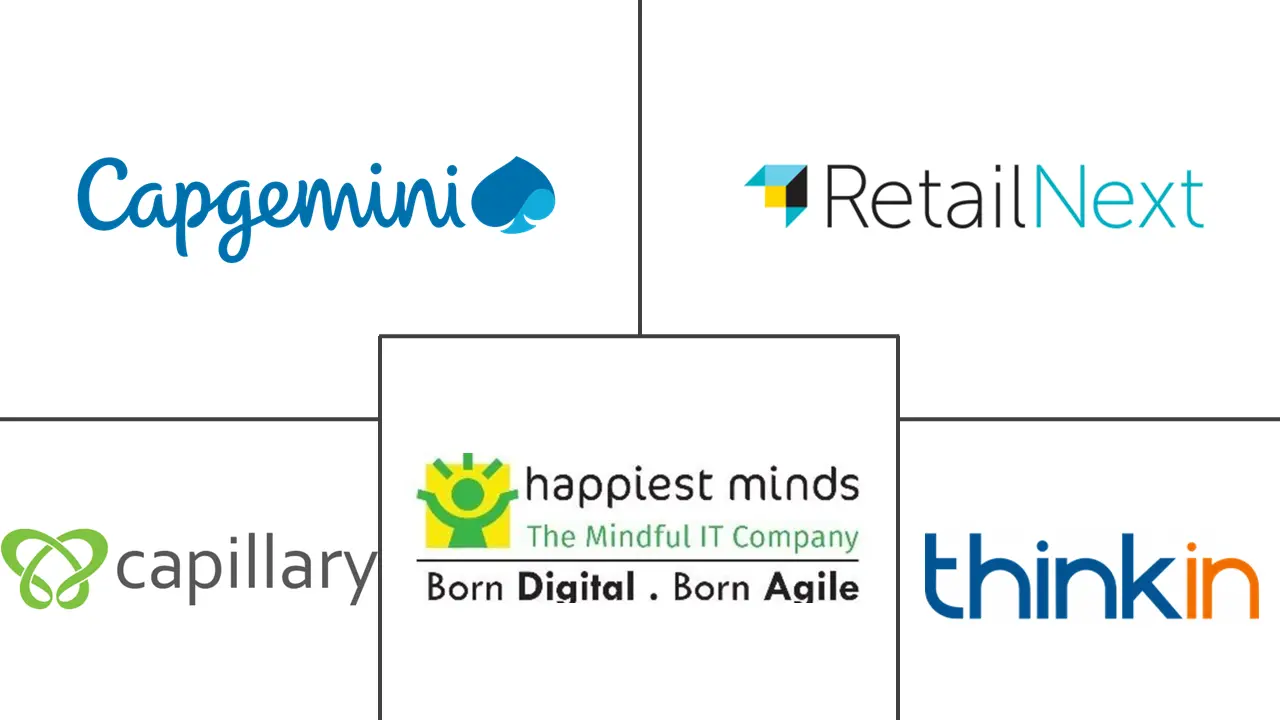Market Size of NA In-Store Analytics Industry

| Study Period | 2019 - 2029 |
| Base Year For Estimation | 2023 |
| Market Size (2024) | USD 1.38 Billion |
| Market Size (2029) | USD 3.72 Billion |
| CAGR (2024 - 2029) | 22.00 % |
| Market Concentration | Low |
Major Players
*Disclaimer: Major Players sorted in no particular order |
Need a report that reflects how COVID-19 has impacted this market and its growth?
North America In-Store Analytics Market Analysis
The NA In-Store Analytics Market size is estimated at USD 1.38 billion in 2024, and is expected to reach USD 3.72 billion by 2029, growing at a CAGR of 22% during the forecast period (2024-2029).
Factors such as increasing data volume in in-store operations and the need For better customer service and enhanced shopping experience are expected to drive the market.
- In the hyper-competitive retail market, in-store analytics is gaining traction. In-store analytics has the potential to transform the store layout and improve customer experience across different business segments. In the North American region, retailers use smart carts with location beacons, pin-sized cameras installed near shelves, or the store's Wi-Fi network to see how many shoppers entered the store, how they moved around once inside, and what key areas they visited. This process can provide basic demographic data, such as gender and age group.
- The retail market in North America is one of the biggest. Wal-Mart, Costco, Kroger, Home Depot, and Target originated in this region. The rapidly growing data volume across in-store operations drives the market's growth. With increasing sales value, the volume of data is increasing. With growing data volume, it has become difficult to track every customer's record, behaviors, footfall, etc., without implementing analytics.
- When retailers give customized experiences to their consumers using several technologies, such as evaluating customer preferences, recognizing customer location in-store, targeted promotions, and purchase habits, they accomplish digitalization in shops. The business monitoring technology analyzes these trends to offer valuable insights that assist merchants in increasing sales, revenue, and footfalls. For example, Amazon announced the debut of its new Store Analytics service in June 2022. The e-commerce behemoth is attempting to profit from its physical storefronts by providing marketers with data on what customers buy.
- The United States Bureau of Labour Statistics estimated the demand for skilled and knowledgeable data scientists to boost by 2026, leading to a 27.9% rise in employment. However, this huge demand would also bring a significant shortage of qualified professionals. Further, another challenge to the market growth is that marketers might need to find new ways of executing their strategies in 2022 and beyond to satisfy the consumer thirst for convenience. New data privacy regulations like the California Consumer Privacy Act and Virginia's Consumer Data Privacy Act set a chain of events in motion that will heavily impact retail marketers. The third-party data that once enabled specific user targeting will no longer be available on ad platforms such as Google and Facebook. Retailers are trying to explore new ways to use first-party data in their digital marketing strategies.
- Due to the COVID-19 pandemic, the retail industry has seen significant technology adoption to manage store occupancy and screen temperatures, maintain social distancing, and streamline the use of facilities. Some of these adoptions are mandated by law, and others were made to ensure customer safety and limit store closures. Many of these technologies provided retailers with significant advantages for in-store analytics, and a much better return on investment is seen as a long-term strategic investment rather than a temporary protective measure.
